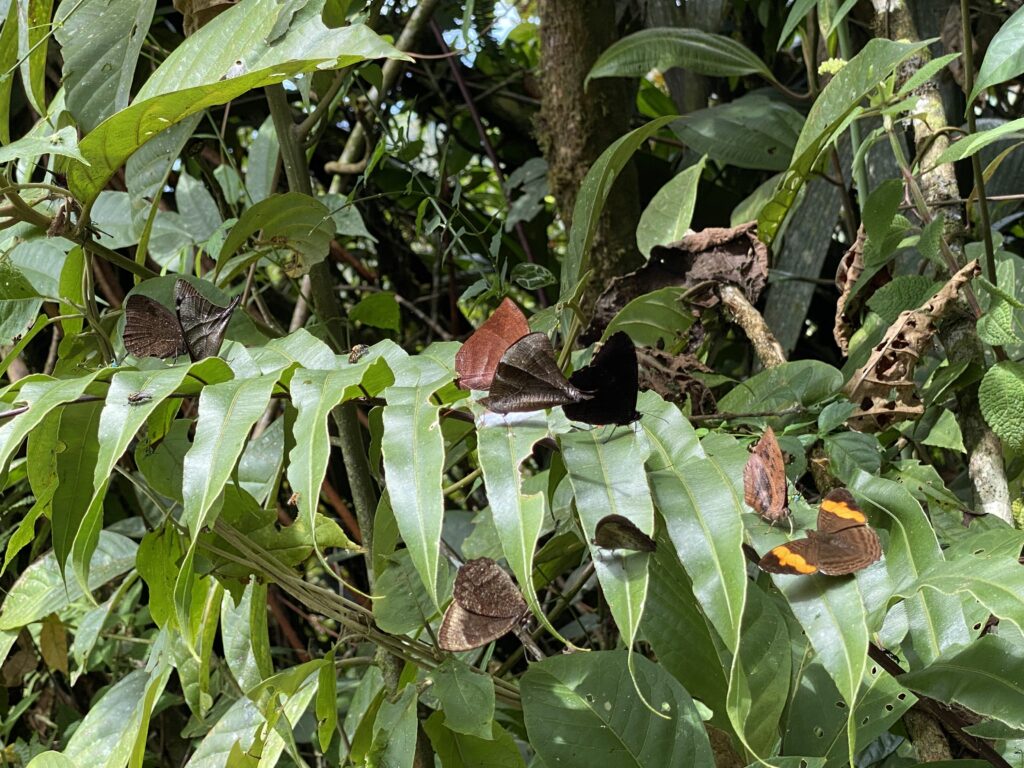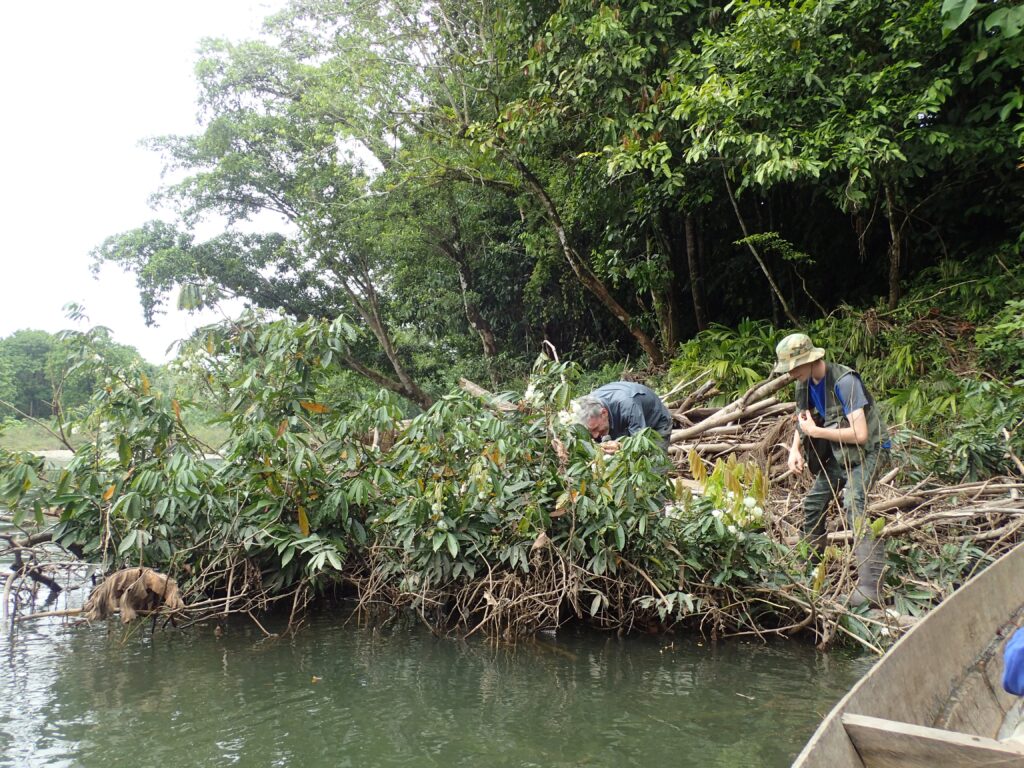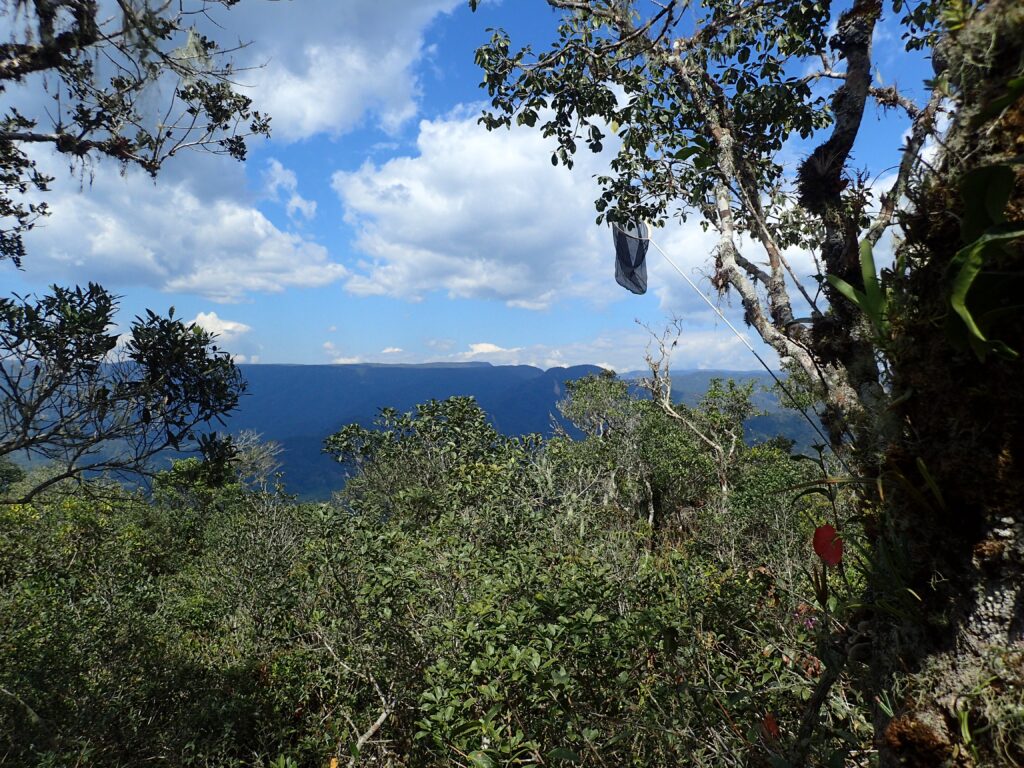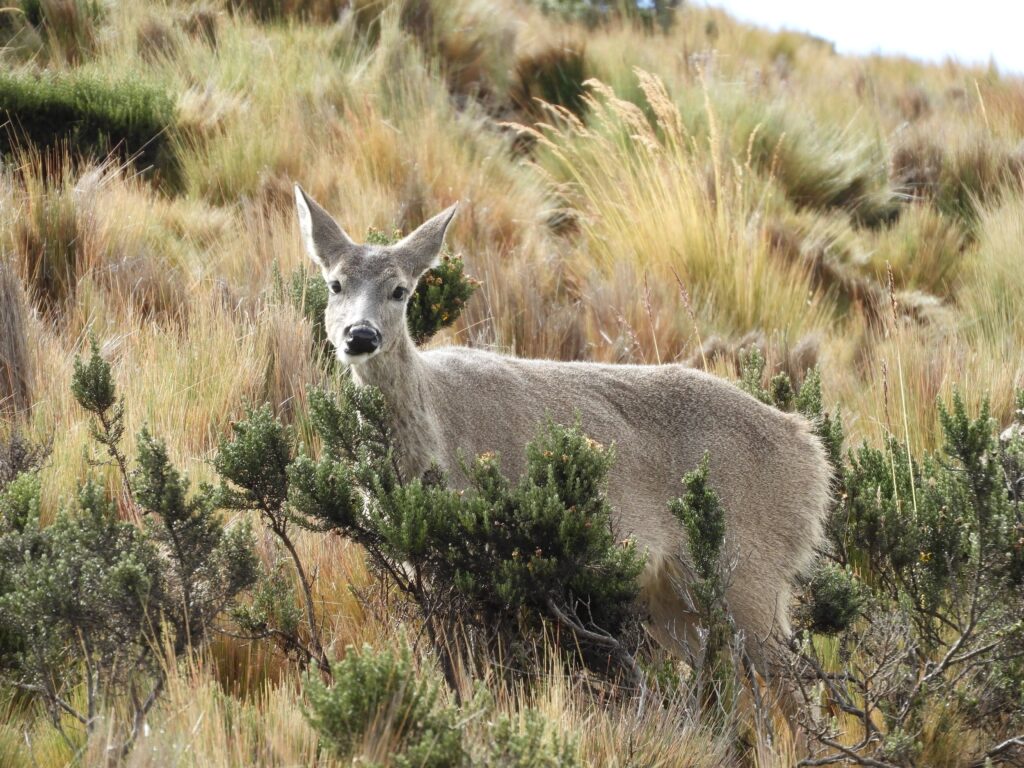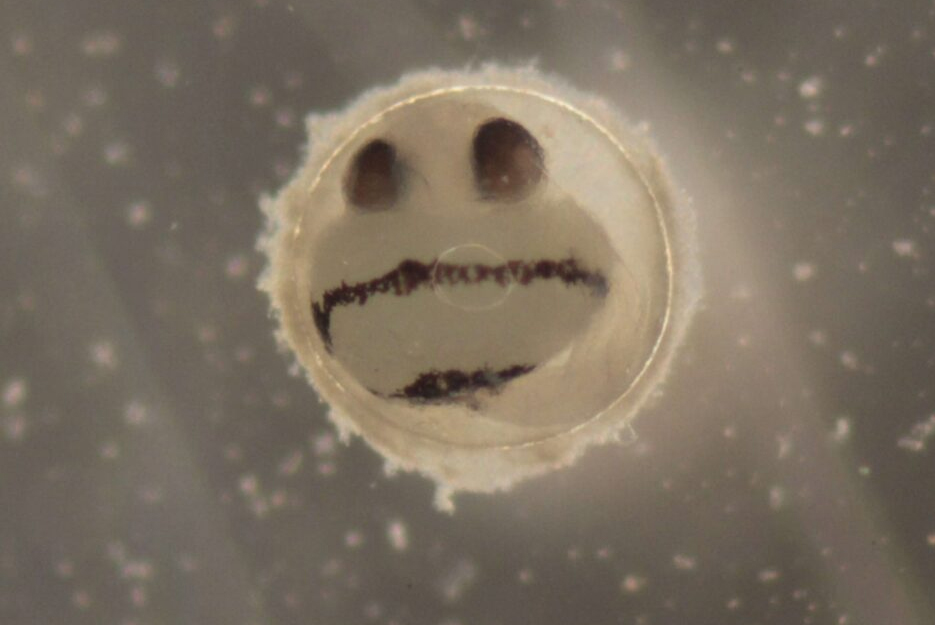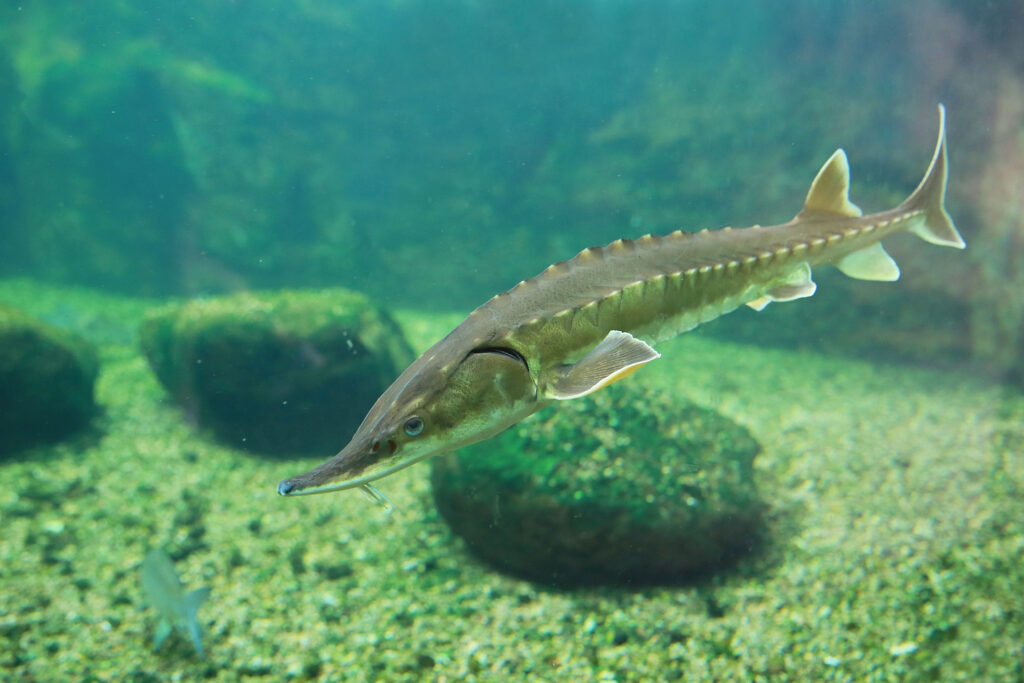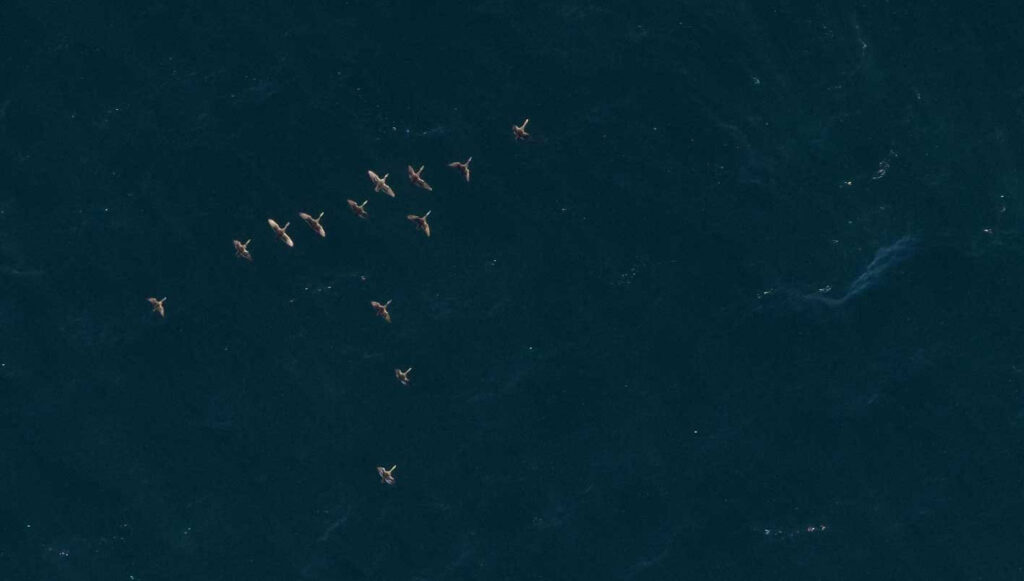In late July, my husband and I, along with our son Jamie and friend and butterfly expert Jason Hall, left for our first trip together out of the USA since Covid started, to continue a long-term research project on the butterflies of Ecuador. Despite the many Covid-related uncertainties of travel, all went smoothly, and our first evening saw us in Tababela, a peaceful highland village near the Quito airport. The following morning was typically busy, meeting with colleagues from museums and institutions in Quito and picking up field equipment, before setting off for the small town of Méndez in the Andean foothills of southern Ecuador.
Méndez is the starting point for the road east to Santiago, a small town at the edge of the Amazon basin surrounded by low hills, ridges, and flat-topped sandstone tepuis, and our base for the first week. During the many hours of cloud and resulting butterfly inactivity, we searched for caterpillars to find new information about this often poorly known part of the life cycle of these insects. One of the first caterpillars was initially baffling, seemingly with traits from multiple butterfly families, including long, blunt head horns and paired “tails.” As it attached its pupa with a silk thread, we realized that it was a member of one of the most unusual Lepidoptera families, a small group of 30 or so species, the Hedylidae, an evolutionary branch within the butterflies with deceptively moth-like adults. Another memorable find was a bright yellow hairstreak caterpillar feeding on the equally brilliantly colored flowers of legumes along the forest’s edge. With the help of friends and local guides we explored an epic forested ridgetop to look for hill-topping butterflies, recording a new butterfly species for Ecuador. Navigating up the Río Yaupi in a peque-peque canoe designed for shallow, rocky rivers, we hacked into the middle of wickedly thorny bamboo patches along the banks to look for bamboo-feeding butterflies.’
Our next destination was the town of Yantzaza, a day’s drive south, on the road from Gualaquiza to Zamora, and a base for visiting several sites in the east Andean foothills. Our hotel had an open roof, ideal for inspecting the morning weather and deciding, usually unsuccessfully, where best to spend the day. Nearby sites included several prominent hills and ridges, which are magnets for metalmark and brilliant blue hairstreak butterflies, and the Cordillera del Cóndor, an isolated mountain range rich in endemic butterfly species.’
From Yantzaza we continued south to Yankuam, a small lodge on the banks of the Río Nangaritza, one of the most biologically unique areas in Ecuador. Running between steep-sided sandstone tepuis, the river and surrounding mountains are known for many endemic plants and animals, including several undescribed or recently described butterfly species. In search of clearwing butterflies we visited a reserve on the Río Nangaritza; the suspension footbridge over the river had been much neglected during Covid and planks were missing or rotting throughout, with a large expanse of dense, vine-threaded jungle blocking the end of the bridge and start of the trail. Several hours of machete work later we were in amongst the clearwings, flying slowly about in their understory leks along the river, where males disperse scents from feathery “hair-pencils” to attract females. Our remaining days were spent on a small hilltop with stunted trees coated in moss, perfect for clambering about to collect the ghost-like metalmarks fluttering beneath the canopy in the late afternoon.
Then it was time to head back to Quito; several long days driving were interrupted by a detour on our last day to spend four productive hours at a legendary cloud forest ridge site. We arrived back in Tababela late and the next morning set off early on our last day to visit the nearby Reserva Antisana in hope of seeing Andean Ibis and other inhabitants of the high páramo grasslands. Alas, we did not see the ibis, but we did encounter White-tailed Deer, Andean Fox, and numerous other highland birds, including four hunched Andean Cóndor silhouetted on a far ridgeline.
Field work in Ecuador is something that we have undertaken as a family since before our son was born, and we have made research trips every year with him. COVID-19 restrictions and global pandemic concerns through 2020 have made us even more grateful for the opportunities we have had, and the opportunities that we hope to continue.

